目的から探す
ページ番号:5450
更新日:2018年4月1日
ここから本文です。
Tsumugi no Yakata
One day in Ibaraki
Tsumugi no Yakata
Yuki City in western Ibaraki is famous as the home of Yuki Silk (結城紬), a UNESCO Cultural Intangible Heritage. Yuki Silk has over two thousand years of history behind it, making it one of the oldest silk making styles in Japan. The techniques have been passed down through generations of Yuki residents and the style is still alive today, though sadly the number of practitioners has been decreasing over the years. At Tsumugi no Yakata, not only can you view the beautiful products that have been made with Yuki silk, you can also learn about its history, see how the silk is made, and try making something yourself.
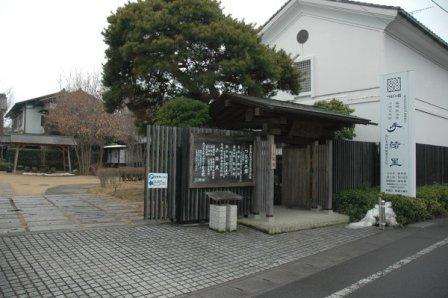
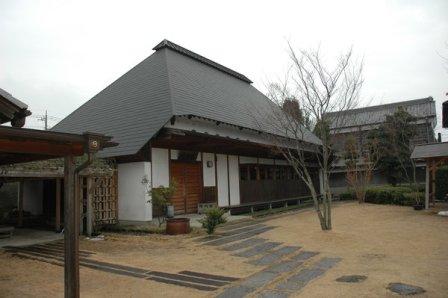
Tsumugi no Yakata is made up of several buildings. One is a traditional Japanese house that has been remodeled into a museum, and inside you can find displays that explain the step by step process of making Yuki Silk, from spinning the thread to weaving the fabric. A number of beautiful garments are also on display, allowing you to appreciate the expert craftsmanship up close. There is a small store selling a number of items made with Yuki Silk – although many of them are quite pricey, there are a number of small things like coasters available for those who want a souvenir. After you learn about how much work goes into making Yuki Silk, you will understand the price tags.
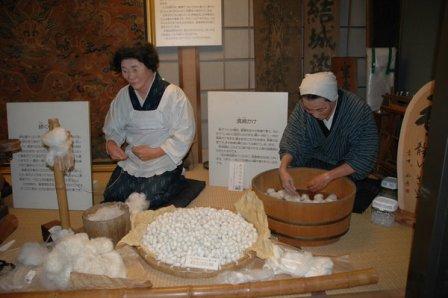
In a separate building, there are a number of looms set up so visitors can watch how Yuki Silk is made and have a go at making something for themselves. We decided to try the jibata, or ground loom, one of the oldest kinds of hand operated looms used to weave bolts of Yuki Silk. The operator becomes part of the machine in order to use it – a plank is placed against your lower back and a piece of fabric is wound around one of your feet and attached to the machine to maintain thread tension. Ten minutes of work was enough for me to form a great deal of respect for the artisans who spend 8 hours a day working at the loom. To produce the high quality silk used in Yuki Silk garments an enormous amount of skill and concentration is required. It can take over a year to weave enough silk for a single kimono.
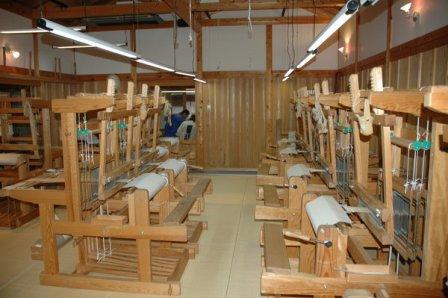
The lighter coloured fabric is the amount of progress I made after one hour. I also broke a string and the instructor had to fix it for me. This workshop will give you a much greater appreciation for the effort that goes into creating high quality silk.
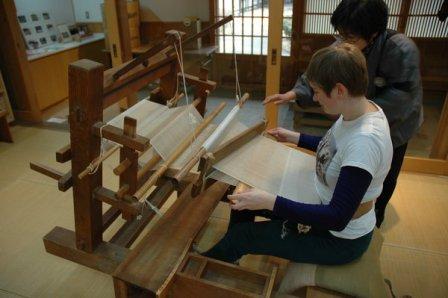
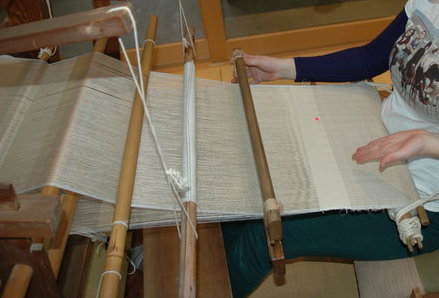
The second workshop we tried out was making a coaster. This was much quicker – it only took about 15 minutes to create a beautiful little hand woven coaster to take home with you. You were also allowed to pick the colour of the thread. The trick is to keep the length of each row of thread even so that the edges line up properly.
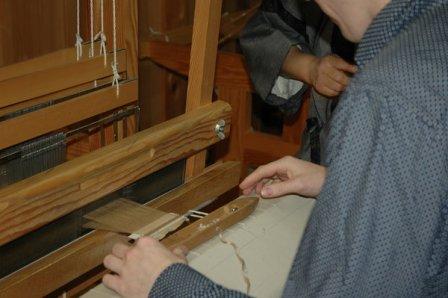
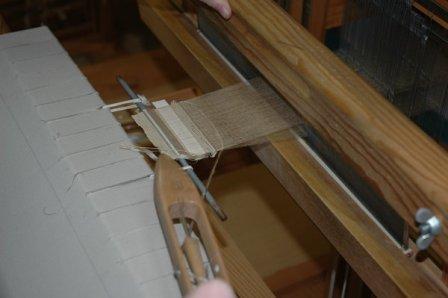
There is also a tie-dyeing workshop available that we did not have time to check out when we visited, but you can design your own pattern and make a t-shirt or a shawl to take home. Tsumugi no Yakata is a great place to learn about an art that few of us know much about, and definitely worth a visit the next time you’re in the area.
Tsumugi no Yakata
12-2 Yuki, Yuki-shi, Ibaraki-ken
Opening Hours: 9:30am – 5pm daily (closed Tuesdays)
Cost: Entry is free, workshops are between 1000 and 3000 yen each
Free onsite parking available
Bookings and Information
TEL: 0296-33-5633
E-mail: tumuginoyakata@okujin.co.jp
Back to "One day in Ibaraki"
Back to mainpage
Copyright (C) Ibaraki Prefectural Government. All rights reserved.